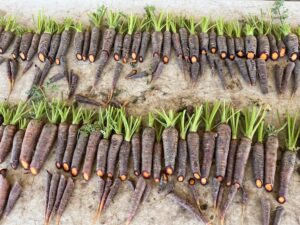
In the world of organic agriculture, the question of better carrots isn’t just about yield—it’s about collaboration amongst farmers, breeders and eaters, reaching for flavors, colors, and other unique traits. The recent webinar hosted by Canadian Organic Vegetable Improvement Project (CANOVI) and Carrot Improvement for Organic Agriculture (CIOA) provided a fascinating glimpse into the collective efforts to enhance organic carrot varieties across Canada and the USA.
CANOVI, spearheaded by The Bauta Family Initiative on Canadian Seed Security in partnership with the University of British Columbia, and CIOA, a collaborative effort in which Organic Seed Alliance is involved, are two active players in the world of carrot breeding and trialing. These initiatives are dedicated to addressing the needs of both organic growers and consumers. CIOA’s focus for organic growers is on orange and novel colors, disease and pest resistance, weed competitiveness, and post-harvest storage; and for consumers, it is on colorful, convenient, crunchy carrots with culinary quality, sweetness, succulence, and nutritional benefits.
In the webinar, Weijia Wang and Chris Thoreau highlighted some of the work of CANOVI, giving background on their participatory trials which included a round up of orange carrots, and another comparing a few mixed color, red, and yellow populations/varieties. Orange varieties included Bolero, CANOVI Orange, CIOA Orange Flavor, CIOA Orange Strain cross, Touchon, Dulcinea, and Uberlandia. An impressive collection of data was shared, with Bolero scoring highest for all noted traits: germination, vigor, canopy, yield, uniformity, marketability, appearance, and flavor.
Longtime USDA carrot breeder Philipp Simon and OSA Research and Education Co-Director Micaela Colley shared about the lines that have been grown out in CIOA participatory trials. They included Orange Strain Cross and Flavor Population, with tall tops, great flavor, cavity spot/nematode resistance and more; Uberlandia, a juicy, tropical climate-loving carrot originating from Brazil; Purple Orange Purple, with a purple core offering a unique culinary experience; and Fantasia: a mix of diverse and tasty carrots selected through a school garden project, highlighting the importance of community involvement in breeding.
Through the discussion of participatory breeding and data collection, a few notable resources were pointed to. The first was CarrotOmics, an online database where carrot experts store and analyze info about carrots, such as details about carrot genes, traits, where they grow on maps, and special markers that scientists are creating and using. The second was SeedLinked, a web platform that allows farmers, gardeners, and plant breeders to easily find and study details about how different plant varieties adapt to specific regions, their flavors, and how well they sell in the market. And for those in the Pacific Northwest with an interest in carrot seed production, there was OSA’s guide to producing organic carrot seed.
CANOVI and CIOA will continue with breeding efforts, advancing promising breeding lines toward release-worthy form. Eventually the intention is to make more seed available to individuals, seed companies, and growers to trial it, and in the case of CANOVI, increase domestic organic carrot seed production. To learn more, watch the full webinar, and stay tuned for more on carrots from OSA!
